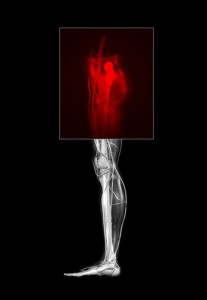Michigan Biologists Work on MD Therapy Based on Calcium Channels
by |

 New discoveries in the laboratory are leading to exciting, new possibilities for developing the next generation of Muscular dystrophy therapies. Recently, researchers found that by targeting muscle repair, rather than that the genetic defect that is the underlying cause for muscular dystrophy, they may be able to treat the disease more efficiently, which provokes significant atrophy and weakness of the muscles. The conclusions are from a study conducted at the University of Michigan, which analyzed the disease and its association to calcium on a mice. The researchers believe that their findings may lead to the development of new therapeutic options.
New discoveries in the laboratory are leading to exciting, new possibilities for developing the next generation of Muscular dystrophy therapies. Recently, researchers found that by targeting muscle repair, rather than that the genetic defect that is the underlying cause for muscular dystrophy, they may be able to treat the disease more efficiently, which provokes significant atrophy and weakness of the muscles. The conclusions are from a study conducted at the University of Michigan, which analyzed the disease and its association to calcium on a mice. The researchers believe that their findings may lead to the development of new therapeutic options.
Muscular dystrophy implies a mutation in determined proteins, the most common of which is the dystrophin protein, which causes the disease in both humans and mice. Therefore, the research team, led by cell biologist Haoxing Xu, demonstrated that mice who lacked the critical calcium channel TRPML1 inside their cells also had similar defects in the muscle, consistent with ones present in human patients who suffer from muscular dystrophy.
Even though there was no defect on dystrophin, the mice developed the disease. Moreover, the the increase in calcium channel activity triggered the muscle membrane repair and muscle function restoration. “The hope is that the same calcium channel will work in people with muscular dystrophy,” said the lead researcher, who worked in collaboration with Xiping Cheng, U-M Department of Molecular, Cellular, and Developmental Biology, the first author on the paper published at the Nature Medicine journal.
The researchers are now planning on continuing with clinical trials involving drugs based on the stimulation of extra activity of TRPML1. Even though the scientific work with the mice started to focus on a gene therapy with a viral carrier to insert extra TRPML1 channels in muscle, the researchers redirected their studies into finding a drug able to activate the calcium channel, as well as provide a similar boost to muscle membrane repair.
[adrotate group=”3″]







